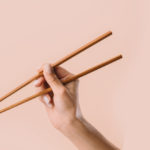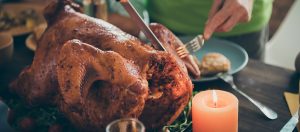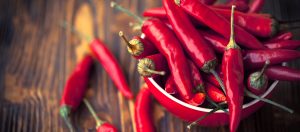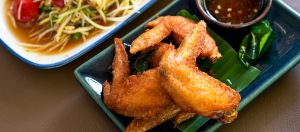One of the curious souls here in Huntington Beach asked me to write about Dim Sum. He said it was a fun experience, but slightly overwhelming to navigate. So let’s start by looking at the tradition behind this interesting format of Chinese cuisine.
Dim Sum originated in Canton area and Hong Kong. The custom started along the famous Silk Road in local tea houses. Targeting weary travelers, the tea houses started to serve a variety of small dishes to go along with the tea. They named it “dim sum”, which loosely translates as “touch of the heart.” Since many of these travelers were merchants, the tradition soon became popular in the cities too. This is why the proper name for “dim sum” is actually “yum cha” in Chinese, which literally translates into “tea drinking.”
Because Chinese American immigrants before the 2000s were largely from Canton area and Hong Kong, Dim Sum were widely introduced across the U.S. Many of these restaurants also specialize other cantonese style seafood dishes, making it easier for first-timer Americans to try. Although Americans are becoming familiar with Dim Sum, people still largely misunderstood it, especially the best way to navigate this unique dining experience.
- Dim Sum = Large Family Weekend Brunch: Dim Sum is one of the most common family get-together occasions in Chinese culture. In our past Dose of Asianess, we talked about food as a necessity for family bonding time. The popularity of Dim Sum is a solid proof. Dim Sum is not something you take a date to. It is designed for large groups, particularly multi-generational households with grandparents and children. Its flexible format, small portion size, and a wide variety of dishes easily accommodates different taste preferences among the old and the young. While you can occasionally find dim sum served during the week, it’s at the core a weekend brunch, served from morning until mid-afternoon.
- Tea is half of the experience: American diners often missed the critical role tea plays in Dim Sum. Because of its origin, the flavor and texture of many dim sum dishes are designed to pair with tea. Without the balance of tea, especially the right kind of tea, Dim Sum can come off as too oily, dry, or heavily flavored. Many restaurants here in the U.S. serve jasmine tea by default, but you should request either Chrysanthemum Tea, Pu’er Tea, or a mixed blend of both. Chrysanthemum tea has a light and sweet taste profile that pairs the best with steamed dishes. Pu’er tea has a earthy and strong flavor that is the perfect antidote for fried and oily dishes. Either way, a complete dim sum experience requires a pot of tea.
- The waiters are NOT yelling at you: If you have ever been to a dim sum, you will understand what I mean. Dim Sum is usually served in a large, open dinning hall filled with round tables. Waiters hustle from table to table with carts of tiny dishes and steamer baskets. The noise level is unimaginable, from large families sharing the latest, to people calling for the carts from far, to staffs running back and forth to stock the carts. After all, a lively and happening restaurant is the first sign of good eats for many Chinese dinners. It is no surprise the waiters have to increase their volume and speed when talking to guests. It is not because they are rude or upset, but simply to get heard and follow the tempo of the restaurant. In addition, it is important to understand Cantonese just sounds more forceful by nature because of its sounds and usage patterns. If Mandarin is like classical music, Cantonese is more like rap, brash, explosive and dynamic. This influences not only the waiters’ English accent, but fundamentally impacts their communication styles and cultural perspectives when communicating to others.
Now you’ve learnt more about the Dim Sum culture, here are some staples you should definitely try if you haven’t picked your favorite dish:
- Steamed dishes:
- Chashao Bun: A fluffy wheat bun filled with BBQ pork seasoned with five spice powder, soy sauce and honey
- Siu mai: Open-faced dumpling stuffed with pork and shrimp, and then wrapped in a wonton wrapper
- Rice noodle rolls: Slippery rice noodle filled with shrimp or pork drizzle with sweet soy sauce
- Meat dishes:
- Phoenix claws: Chicken feet served intact, deep-fried and stewed in a savory sauce
- Steamed pork ribs: Pork ribs are chopped into tiny pieces and steamed with black bean sauce
- Sticky rice in lotus leaf: Chicken, shiitake mushrooms, sausage, scallions, and dried shrimp wrapped neatly in a lotus leaf steamed to perfection
- Other dishes:
- Chinese broccoli: The most common vegetable dish, cooked to tender and flavored with oyster sauce
- Radish cake: Pan-fried slabs made out of shredded daikon radish, taro root, and rice flour, flavored with chili and soy sauce
- Egg tarts: A derivative of an English custard with a creamy and light sweet texture
Does reading this make you hungry? Maybe you should plan on having Dim Sum this weekend! Share your experience if you do end up going!







